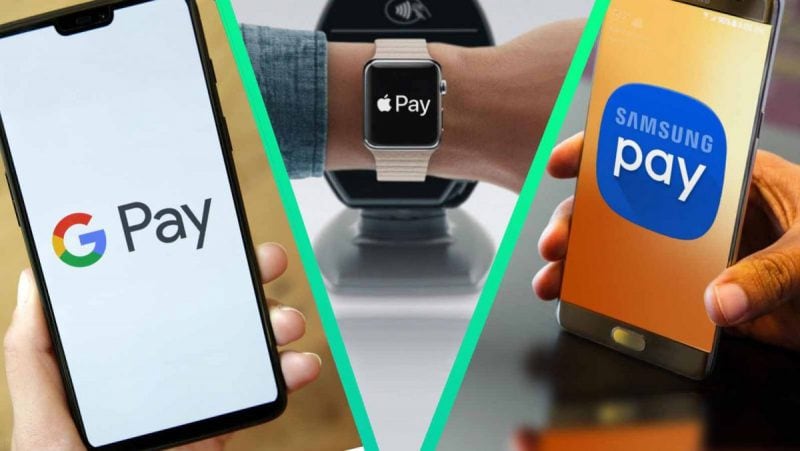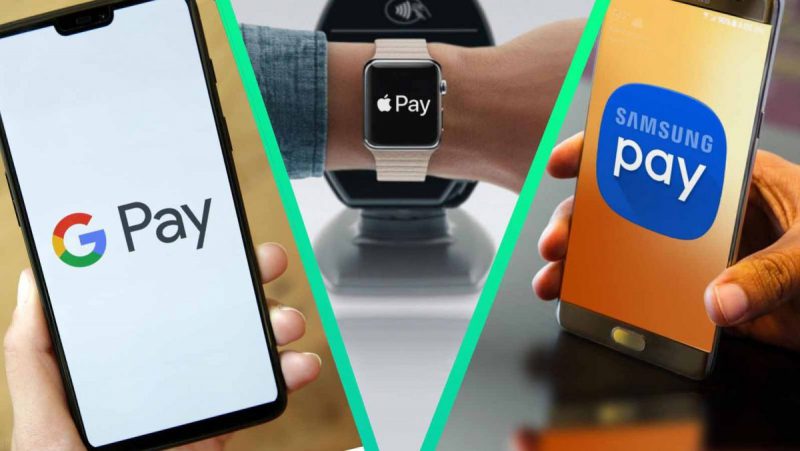A Bird’s Eye View of Payments in a Post-COVID World
UATP’s Rachel Morowitz offers an overview of an increasingly complicated transaction for travel companies and businesses
May 5, 2021


Payments, whether credit card, PayPal, peer-to-peer or EWallet, are getting both easier and harder for customers and corporations to transact. New options and integrations are cropping up around the world as transaction protection is getting harder to manage. We caught up with Rachel Morowitz, VP, Alternative Forms of Payments for Universal Air Travel Plan (UATP), at the Digital Travel Summit this week to find out how airlines are working to meet changing customer demand in post-pandemic times.
Rachel Morowitz: When we talk about alternative forms of payments or AFP that simply means any form of payment that’s not running on a global credit card network. Okay, so that’s the high level definition but what does that really mean? Let’s take a look at some examples.
Travelers, around the world want to be able to pay for travel with their preferred form of payment, and that’s going to vary as there are numerous types of AFPs. For instance, there are eWallets like Alipay, that are very popular in Asia. And there are options like Billetto where the traveler makes a purchase online and then pays afterward. And there are many types of agencies around the world, ranging from prepaid gift cards, mobile options like Apple Pay, and installment brands like Uplift. Installment brands have become very popular. So, now that we understand what alternative forms of payment are, we need to know why are they important, and that can be for several reasons. First, we’ve all seen the exponential growth of shopping online and that has increased the exponential growth of AFP utilization. We were already seeing that pre COVID and we expect those trends to continue.

Global View to What’s Popular and What’s New
Next, some areas just have limited credit card penetration. Here in the US we always think, oh, everyone uses credit cards, and yes they are popular here in the US, but they’re not popular in other parts of the world so folks are using different forms of payment to make purchases online. Finally, more and more travelers are very tech savvy and they simply want to use the newest and most convenient forms of payment. We are seeing this with millennials and Gen Z, but we’re also seeing that Baby Boomers and Gen Xers are comprising an ever growing share of alternative forms of payment usage.
Okay, so now we’ve defined what alternative forms of payment are, let’s start looking at some of the trends and payments both globally and regionally because it’s very interesting to see the differences region by region. Starting with global, as we all know Ecommerce exploded in 2020 and it really posted the highest growth rate in the last five years. Many disruptions created by this shift in commerce and payments have caused an acceleration in the adoption of digital wallets and the decline of cash. In fact, digital wallets are expected to account for more than half of Ecommerce payments volumes by 2024.
And another interesting thing I want to point out is the installment option. Although they comprise a very, very small part of the AFP pie, they’re going to continue to gain market share and are expected to double globally by 2024. There’s a perception that a buy now, pay later approach is usually for folks who can’t afford something. But really that’s only one use case. It’s really becoming about how the Smart Traveler understands budgeting and planning and that’s where installments are now coming into play.
Okay so now that we’ve seen the global trends, let’s shift to a focus region by region focus. Looking at North America, credit cards are still very popular, and we’re seeing in 2020 they are maintaining that popularity, just ahead of mobile and digital wallets. But by 2024, this is really expected to shift with eWallets gaining a sizable share.
Shifting to Latin America, we have seen that during COVID, many turned to Ecommerce for the very first time. So, more than 10 million regional customers were making their first digital purchase and we’re really seeing a shift in Latin America now. Credit cards remain the most popular payment method in Latin America, but what I do want to note is that credit cards in this region have the benefit of installment payments so a lot of this usage of credit cards is for installments within a credit card offering. An we’re seeing that digital wallets and debit cards are going to gain some momentum there over the next few years.
In Asia, when we look at the numbers here we see absolute dominance by eWallets. They loom much larger than any other forms of payments and continuing to gain in popularity as consumers turn away from other brands at historic rates. And what’s really interesting to note is that China is really continuing to lead globally in digital wallet usage and they account for almost three fourths of 2020’s Ecommerce payments.
In Europe, payment is all about digital wallets and installment offerings. One really interesting thing to note is the really balanced Ecommerce payments landscape there. You have different forms of payment being used across a different countries from bank transfers, credit cards and debit cards, so unlike in Asia where you see absolute dominance of one form of payment, you’re seeing a nice spread across different forms of payment in Europe. And while digital wallets are still the leading payments form in countries like France, Germany, Russia Spain and the UK, you’re seeing other other forms of payment, such as installments, which are going to make their largest gains in Europe, pretty much doubling by 2024 to account for about 14% of Ecommerce spend.
And finally, let’s take a look at the Middle East and Africa — the pandemic really accelerated digital adoption here. Similar to Europe, payment methods reflect the diversity of the regions and the various different forms of payment in use throughout these regions. So, credit cards, still are gaining regional share. But what we’re noticing is that cash is still very popular for large segments of the population, especially where the consumers are under banked. Looking ahead, digital wallets are going to continue to gain the most ground in this region, but you’re going to see that the other forms of payment hold their own as cedit cards continue to dominate.
So, how do we translate these findings into impact on travel, travelers and merchants?
Are Airlines Fishing Where the Fish Are?
A recent study on payments in a pandemic indicates that the top three priorities for airlines to accept new payment methods are based on cost and cash flow. Airlines are still focused on cost and cash flow due to drastic cost-cutting measures that were needed throughout the pandemic. But customers really want to be able to pay using their preferred method of payment, no matter what the underlying cost is to the merchant. So, it’s very important for merchants to make sure they have the optimal mix of cost savings and customer experience when accepting new payment methods. In shifting focus to traveler requirements these numbers we are seeing that many travelers prefer non card payment methods, and the majority of them want to have a good payment experience, including having more payment choices. As there are different forms of payment around the world, customers in each region expect their preferred form of payment is going to be available to them.
And customers are saying payments aren’t just the last step in a transaction anymore. In fact, payments are increasingly the deciding factor on whether a traveler will shop with a merchant at all. So we’ve looked at the merchant requirements; we’ve looked at the traveler requirements. What should a merchant do as we emerged from the cost-cutting times of COVID into the post-COVID era?
As we know, digital innovation has been a key factor in the evolution of the travel payment sector. We’ve seen many trends over the years, which have only intensified during COVID. We expect to continue post-COVID to increase the use of eWallets, PayPal Alipay, in-app payments and Apple Pay. But COVID has definitely changed consumer behavior and merchants clearly need to be able to change right along so it is very encouraging that merchants are looking to make at least incremental, if not major, changes in their organizations to meet these customer needs.
What are some of the ways that merchants can do that? Travel merchants can leverage development of new payment features specifically to address evolving customer behavior while limiting risk. We see that many of the key players in the travel space indicating they intend to implement installments and installments are really a great way to satisfy both merchants and customer needs. Since the merchant gets paid in full upfront, while the customer only pays over time, so it is encouraging to see that merchants are now moving away from cost cutting measures and looking at how can they assist in help with customer needs and customer expectations.
State of Pay
Summing up, merchants really need to assess their current payment state, and that means looking at whether they are focusing on costs or customers, or a combination of both. They need to research how they can best manage and limit risk and keep costs low while still satisfying the customers’ needs.
Next is developing a roadmap toward getting there and then finally, focusing on a payment strategy, tracking the performance of payments, reducing risk by having a multi-partner strategy, and not relying on just one partner for all needs. This will really allow travel merchants to benefit from higher conversion rates due to implementing payments, their customers want and having increased flexibility by not relying on just one partner. While most merchants see UATP as the low costs, global closed loop payment network that’s owned and operated by the global airline industry and operating really for the benefit of airlines, and what many folks may not know is that in addition to being a closed loop network card network, we also assist member airlines with their payment strategy, including the acceptance of alternative forms of payment.
UATP works together with our airline members to understand our payment needs and help them develop their payment strategy, and then we partner with the payment brands around the world, many of the payment brands that I mentioned earlier, such as Uplift and PayPal, but the ones that are merchants customers are using the options they want to pay with. The UATP network allows members to more easily and cost effectively accept those payments.
So, that makes the merchants happy and then customers are also happy as the airlines allowing the forms of payment they want to use — increasing conversion rates, and increasing the average level value of the sale. We simplify the integration, processing and reconciliation, as well as lowering the cost of acceptance. And we have that global coverage, which ensures that our airline merchants can offer whatever form of payment to their customers want to use.
Basically, our goal is really to help our merchants accept payments in any form as the landscape changes and we move into a post-COVID era.




